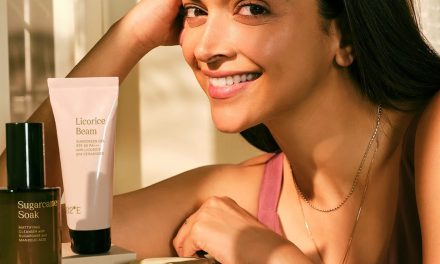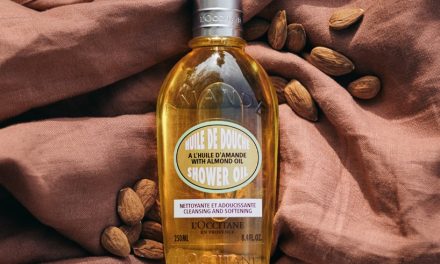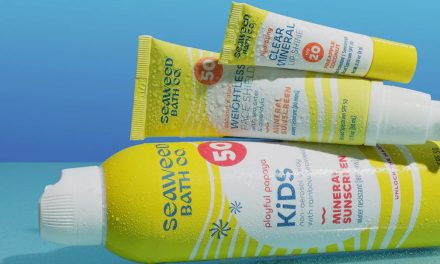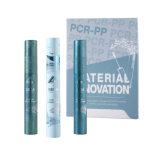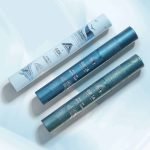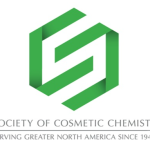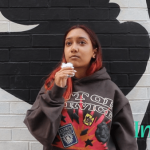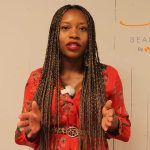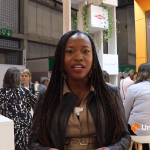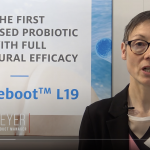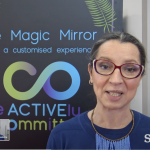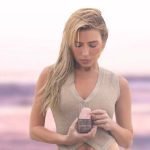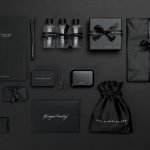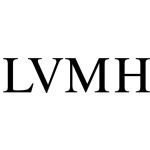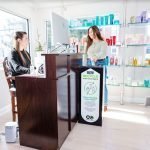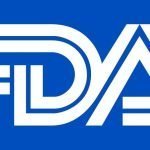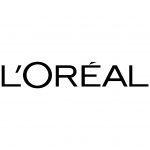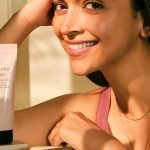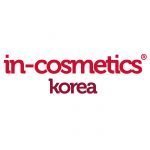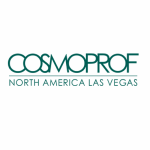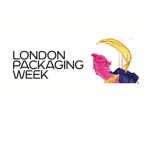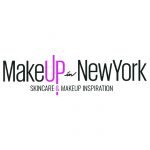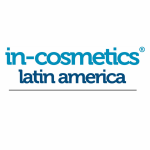
Open Podcast Transcript
[00:00:00] Hello, and welcome to In Conversation With, the monthly podcast series brought to you by the team that produced the Global Cosmetics News Feed. This year’s theme is creating cosmetics. This month’s topic is sun care, and I’m your host, Siobhan Murphy. Escalating climate crisis has elevated some protection from a seasonal consideration to a daily necessity.
This presents boundless possibilities for innovation within the sun protection product market. However, the pivotal challenge for the industry lies in balancing affordability and inclusivity with ease of application while minimizing environmental impact and ensuring profitability. To help me discuss these challenges and more, let me introduce you to this month’s panel.[00:01:00]
Hello and welcome back to Sarah Dudley, CEO of The Sunscreen Company and Anita Walford, Global Marketing Director, Technical Marketing Innovator and Content Creator. Anita, let’s start with you. What are the consumer challenges and where are the opportunities for creating sun care products in 2024?
Hi Siobhan, it’s really nice to be back on the podcast today. So I think there are a few Key things that consumers are still struggling with 1 is a clear understanding of filters, mineral, physical, inorganic versus chemical, organic filters. And this is a really easy 1 for us to fix. I feel as an industry, if we just use consistent language, if the brands continue to make educational videos, a quick infographic, keep it like a cheat sheet.
I think that’ll go a long way because. We’re not all referring to the types of sunscreens that we’re formulating [00:02:00] in the same way. And if we keep repeating the same thing, eventually, it will catch on we’ve been saying it. But the problem is, every brand is speaking their own language, and they have a right to do that, but it’s confusing to consumers.
And I was just looking at some data from mental and it says 71 percent of consumers prefer mineral over chemical formulas. But only 68 percent of those people, those same people. Say that they can actually tell a difference, so they’re buying it because we’re marketing it to them, but they have no idea what they’re really buying or at least.
They aren’t able to articulate what they’re buying. And I think that it just says we have some work to do as an industry, right? The 2nd challenge. I think we can focus on is when to use what types of sunscreen. There’s so much overlap right now with skin care. So many skin formulas that have and then pure sunscreen formulations that have all these great added benefits.
But they also look like skin [00:03:00] care. If your sunscreen has, anti acne or hydration or anti pollution claims, or if it’s got antioxidants and probiotics, and you’re using. All of these other things in your routine, like retinoids and scrubs and you’re exfoliating, how do you know what to use and when to use it?
And I think if we could. Recommend the right things, the right steps, the right moments to the consumer. I’ve seen recommendations that always say, hey, apply sunscreen as your last step. But then I’ve also seen people say, no, put it under your makeup. And if you’re doing all of these things, it can be a lot to take in.
If we can help them understand when to use the sunscreen based on their skin type, but also the type of sunscreen that they purchase, whether it’s a hybrid formula, mineral formula, or a chemical formula. I think that’s important. And maybe the last challenge to talk about today would be understanding how much to really put on.
I think this question is [00:04:00] all over social and especially lately more because of the economic impact than the formulation piece. But, people want to know, based on the cost of some of these sunscreens. How much should I really be applying because they want to skip right? They’ve spent 40 or 50, 50 Euros on a bottle and they want it to last more than a month.
And I’m seeing literally demos of people pouring a quarter of a teaspoon and then putting on the face or applying it to 2 or 3 fingers and be like, this is what you need or saying. No, you really don’t need that much. Ultimately, if you don’t have enough on, we all know you’re not getting the SPF that’s advertised.
So I think if brands could also include that information in their marketing. And educational content, that would be fantastic. And at the sunscreen company, Sarah, filters, types, and application. Are they the challenges?
Yeah, I would very much agree the idea that, consumers are overwhelmingly confused, right? It’s an [00:05:00] overwhelming decision. And I was trying to think put it into my own personal context, like things that I’m not an expert in. Buying toothpaste or buying organic versus non organic food.
And it’s very similar into buying sunscreen for a consumer in the sense that it’s a health decision, a very large one that an individual or family has to make that’s meant to affect their every day, right? This is something you should be doing every day and has huge health impacts. So you can understand if you’re trying to buy this as a consumer, you’re either at shelf level and you have all of these options in front of you, all of these filters, all of these formats.
And you can see how paralyzing that is for a consumer. Or, you’re someone who’s decided I want to put a little bit of extra work into this, some thought into it, so I’m going to do some research before I get to that point, or I’m shopping online. And what you’re seeing in this digital landscape is you’re doing research and for whatever question you have, mineral versus non mineral, whatever the question is, you will research it and for every one [00:06:00] viewpoint you get, you will get an opposing one.
So it’s completely you know, confusing and people are trying to find something that is credentialed, that is believable. And there’s a thousand and one options, especially with the proliferation of social media. So that’s very confusing for a consumer. And at the day, there’s some, there’s a little bit of high stakes in the sense that if you make the wrong decision, whatever is perceived to be the wrong decision, you could be judged for your choice.
You could be made fun of in your own social circles, online. whatever it is. So it’s a high stakes decision, even though you’re just choosing sunscreen, right? But, specifically to sunscreen, what I see consumers being confused about is they want to choose the best one, right? Let’s say you’ve convinced them, and that’s not an easy thing to do.
You’ve convinced them that they need sunscreen, and they need to wear it every day. So you’re a little further down the road, because there’s lots of people who don’t even buy into that. But let’s say you’ve convinced them of that. And now they just want the quote unquote best one. And the issue is you’ll see even from medical experts, right?
Like dermatologists will say, [00:07:00] choose the sunscreen that you like. The right sunscreen is the one that you will use every day. And yet, in my mind, because I am coming from a North American perspective, but even in the E, right? Sunscreens are drugs or sunscreens are. a cosmetic that is more than just your simple moisturizer, right?
There’s more in terms of benefits. There’s more risk. There’s more than just a moisturizer. So what I don’t love seeing is when a consumer, or even when we have reviews, it’s sunscreen time. So you’re going to start to get sunscreen reviews, like from all sorts, all across the board. And it just becomes a question of, do you like the texture?
Do you like the scent? Do you like the way it applies? Very much questions that you would ask of a simple moisturizer. And the idea of efficacy and safety I think are too overwhelming for most people to tackle. Even quote unquote social media experts or influencers, right? It’s too much. So I think that we’ve seen, this kind of dilution of the category in a way [00:08:00] that is It’s not helpful and I, keeping in mind that I understand how overwhelming it is for consumers as well.
Indeed. And thinking about this high stake decision and now that sunscreen is a health benefit, Arnita, what are the technical challenges and where are the opportunities for creating sun care products? So Sarah, I think what you just said was really spot on when it comes to talking about Convincing the consumer that they need it. That’s the uphill battle. And then once they’ve used it. How it’s been that reduced down to texture and that’s actually something I was about to talk about. So I think that’s a great segue.
Skin barrier protection as a whole is all the rage right now. That’s what we’re seeing all over tick tock all over social. It’s, my skin barrier. What am I doing? What am I putting on it? And what is, what’s what am I using to protect it? But. But that’s nothing new, anybody who’s been in this business long enough.
We all know that we’ve been doing it since the beginning, [00:09:00] but I do think social media presents an opportunity for us to decode every ingredient to talk about it to show how we’re applying it to show how they’re potentially working or not working for certain skin types. And I think for some care.
Specifically, as the main actives, the filters are regulated, they are more than just your everyday ingredients that go into your moisturizers, et cetera. Just a bit earlier, and so if we are trying to innovate with some care, if we are trying to create new textures and formats, because that’s what’s quote unquote selling.
That’s what’s speaking to the consumer. I think this obsession with Korean and Japanese some care formulas is just that most people don’t understand that the filters are very different. And that’s. Also, contributing to the different textures of the formulations, and this is an opportunity to break that down.
But [00:10:00] nonetheless, consumers, they’re hungry for additional benefits. That’s the. That’s the bottom line, so I’ve seen a few new approaches that I think we could probably run with, approaching some care as we do skin care and saying, That we can have some 2nd skin technology for post surgery or scars specifically. And then, of course, there’s all these viral patches for under eye and this whole golf patch vibe that’s going on around the social as well. It’s just covering your cheeks, which is part of your face.
But let’s take that to the next level and develop, some sort of under. Sunscreen mask, it doesn’t mean that you can’t wear sunscreen. I don’t think that those types of products are replacing basic sunscreen or sunscreen products. They have an S. P. F. but you also need to apply sunscreen probably under it and over it.
It’s not an all day solution. And then I think, there’s other ways to show added benefits. If we want to add actives or [00:11:00] botanicals or fermented ingredients or whatever into the sunscreens and also, fragrance is having a moment right now, which. Could boost sunscreen usage if we’re having some fun or playful or specific collaborations for sun.
And then, of course, the sustainable, renewable formulas that’s continuing . I would say to push consumer interest, so consumers want to feel good about what they’re using. From a formulation standpoint. You’ll need to be sourcing renewable emulsifiers, texturizers, solubilizers, and that will help over overall upgrade the sunscreen formulation.
If it’s better for the environment and it is, then that should also be part of the marketing story. So that the consumer can understand the full benefits. And again, that’s something that you can decode on social media. Tell them the different ingredients how we can play out that discussion and keep it going and hopefully overall raise the intelligence [00:12:00] level of everybody.
So decoding ingredients, is that the technical challenge at the sunscreen company? Sarah.
Yeah, it’s definitely part of it, right? And I do agree so much that some of the social medias have opened up in a way that, you know, like if when we were in the age of Instagram, let’s say five, six years ago, and it was more about aesthetics and pretty pictures, it was really challenging as a brand to get into the in depth technical things.
It just, there was no format for it, newer platforms have opened it up where you can really get into deep dives, very technical, educational, showcase your expertise in the industry in a way that, there’s an audience for it. And I will say like the technological challenges when it comes to sunscreens is the fact that, like I said, I considered a drug product or at least a cosmetic plus type product , but it’s one of the few ones, if your doctor prescribed you something, you’re like I don’t like the way it’s The aesthetics of it, they would say, I don’t care [00:13:00] take it it’s a drug it’s good for you but you can’t do that with sun care in no way can you just tell people that aesthetics don’t matter, compliance doesn’t matter.
is everything when it comes to son care and it doesn’t work if it stays in the tube. So keeping all of that in mind, the tech challenges are also that, like we were talking about, there’s a lack of consensus on even the basics. Like I’m talking , when you’re in the deep academics of it.
Versus as it trickles down into the industry commercialization of it, then to the consumer, the lack of consensus when I go to things like meetings and you have these experts who are really in the academic world Not agreeing with each other on the basics. So for example when I say as a company, We only formulate with insoluble particles when it comes to our UV filters The fact is there’s a lot of industry people who would say what is she talking about?
Like what is an insoluble particle? What are you talking about? How’s that relates to a UV filter even though that’s technically a very precise and accurate way of speaking about them [00:14:00] but So even on that level, right? We talked about physical versus chemical versus inorganic, organic, mineral, non minerable.
And, when we say no, insoluble particles is actually the way we classify things. It’s not even trickled down, let’s say to an industry level. So there’s a lack of consensus in terminology. There’s also a lack of consensus when it comes to the test. that are used by consumers, by brands, by industry to judge sunscreen.
And that is, for the most part, still SPF, right? That is the metric on a bottle that consumers are still focused on. So when we talk about testing, the fact is that ISO, the organization that’s developed the SPF in vivo method, or many of the methods that are used across the world globally, the in vivo SPF method.
is still talked about, ISO talks about the fact that interlaboratory variability could be 30%. So you send the same formula to one lab, they get one result, you send it to another, they get a different result. [00:15:00] And they have acknowledged that, variability could be as high as 30%.
There are studies that show it could be as high as 50%. So you have this metric that everyone’s judging the performance of your product. , the accuracy of it, the worth of it, suitable alternatives for it. There’s no consensus on that.
So that again is very challenging across the industry. And I think. You also have consumers being told how technologically challenging this category is, in the influencer space, they’re constantly told, dispersion technology, encapsulation, whether you’re active is coded, non coded, all of that is challenging and so unique formula to formula which is true to an extent but they’re told don’t even look at the active ingredients. Whereas it’s really hard to think of another drug like product where you don’t even look at the active ingredient and consider What is the active? What is the concentration?
And because you have consumers just bypassing that information, not even trying to [00:16:00] contemplate it, it’s not included in reviews or, when influencers talk about products, it’s like sunscreens have become this black box. Where, again, we start talking just only about aesthetics and textures because the rest of it is deemed to be too complicated to try and understand.
But I 100 percent agree that there is room to talk about it. There is room for that education, if brands took it on. I do think sometimes brands themselves, though, struggle with it, right? If you’re getting a formula from your contract manufacturer, the discussion is a lot of times I’ve seen those briefs where they’re like we want an SPF We want it to be mineral, let’s say.
We want it to have a nice texture. Can you include, this is our active that we really like to work with, can you include it as a skin care benefit? And that’s the brief. And then they get, let’s say a formula with. For example, 10 percent zinc oxide, and it’s an SPF 50. And there’s not enough understanding to say how did that work?
What is the correlation between the active ingredients? How are we getting this result? Like [00:17:00] that conversation is not there even on a brand level. So a lot of that complexity and technology has, I think, really made it challenging for, Even people in the industry to have meaningful conversations and thinking about complexity, Anita, what are the environmental challenges?
And where are the opportunities for creating some care products?
Now, climate change continues to throw us curveballs and I do think we need to level up our products. And that includes sunscreens consumers are very worried about contaminating the environment with sunscreen, which is part of what Sarah mentioned earlier. hindrances to using it every day. But I think notably in the US, we’ve seen people and by that, brands move away from this safe language to more Hawaii compliant.
Because there just wasn’t enough evidence. It wasn’t an FDA supported claim. There wasn’t enough around it, and it was more [00:18:00] noise and propaganda than anything else, but formulations, they are evolving. I think there’s a clear rise in vitamin fortified sunscreen right now, protection beautification, and that’s an open door to have a discussion and an increase in marketing claims with niche ingredients with more protection against.
The wrath of mother nature things like vitamin C, vitamin E, niacinamide, ferulic acid, peat moss, just digging into the local beauty of wherever you are to find a great ingredient that will vibe with the environment and that will allow you to tell a story about your product. And I think also, whatever the formula is, broad spectrum protection will continue to be a must.
And if you can add that added bonus to it. That’s great, but Overall, people just need to feel like they are being protected against all that mother nature is throwing at us, whether that’s anti pollution claims, [00:19:00] blue light the UV protection as a whole, and then that they’re not doing harm.
And we just need to do a really good job of explaining what’s in the product and how. It’s working for them, and that kind of goes back to what Sarah said again as well. If we, as an industry can come to a consensus about labels about what is, and what is not harmful to the environment. And then I know we’re going to talk about regulatory, but if there can be.
Some consensus around what is the law and what is not the law around sunscreen. I think all of that will help us battle these challenges. Indeed. And at the sunscreen company, Sara, what are your environmental challenges and where are the opportunities? Yeah. I will preface this, but that I am in no means, a marine scientist.
I still really focus on the business [00:20:00] side of things, but it is a question obviously that is inextricably linked with sunscreen and we’re faced with every day. And certainly, it’s always like marketing can go overboard. I think. We saw that when it came to, reef safe, right? That was like this claim that was just put over everything without really necessarily an understanding of, first of all, the science doesn’t lead you that far in a claim, right?
You need to be a little bit more circumspect with how you go with it, right? Because it was just basically, if you didn’t have oxybenzone or you didn’t have octanoxate, then you were reef safe. And it’s wow. That’s marketing leading. That’s not science leading. But to say at the same time, I know, when we had the local jurisdictions like Hawaii, or you see it with Palau, or sometimes Florida was looking at putting in these prohibitions for UV filters.
And then there was some backlash against it, right? People almost making fun of the idea. That’s not based on science. That’s not based on anything. That’s [00:21:00] politics leading it, or it’s based on bad science. And, I think personally for example, I just went on a Disney cruise, right? And you have a lot of people in these tourist areas in small areas, even if it’s the ocean, right?
It’s. We still have a lot of people and the idea that we as humans don’t affect our local environment, just from a common sense point of view, doesn’t make sense to me. So I think the idea that people want to be careful that you have these jurisdictions, these touristy areas wanting to preserve their local environment, I think we can all approach that from a position of being respectful.
From our side, our expert team, we do see there being considerable evidence to be worried about certain UV filters, what we call the soluble organics, the very small molecular weight ones we’re, about permeation for humans, there’s potential concern for permeation for things like aquatic life and reefs.
When someone like Hawaii puts in, [00:22:00] prohibitions, we’re like, yeah, they’re using the idea that the least controversial ingredient would be something like zinc oxide, right? And that’s not to say that 10 years from now, science might not evolve and say there’s an issue in the using the best available Current research.
I think it’s fair to say I would, if I was a consumer going to these areas, I would listen obviously to what the local regulations are. I would be respectful of them. I’d be respectful of the area trying to do their best by their local resources, and I would act accordingly. I think, that’s really fair for a consumer point of view.
And also just practically, if you’re a consumer and you’re listening, like you’re going to these places. use alternative things as well, right? So as much as I love people using sunscreen from a business sense, like there’s alternatives, things like UPF clothing and all of that as well, which all looks to minimize our footprint.
Research is continuing evolving. But I also think sometimes we enter into this discussion of being like these ingredients, I think there’s a lot of [00:23:00] evidence to show that there is an issue with them. It’s it’s not enough to, you can’t just say this ingredient could one day have an issue with it.
So therefore, what do we do? And throw up our hands. I think that we, continue with the research and we keep looking into it and then use best available data at the time. And sometimes the marketing has to show some restraint at the, on the flip side as well. Indeed. And thinking about bad science, Anita, what are the regulatory challenges and where are the opportunities for creating sun care products?
I think globalization is affecting consumer awareness as a whole. Yeah, I was giggling just now because Sarah was saying marketing has to show some restraint as a marketer. I accept that challenge. But globalization is also. Forcing people to act like little kids a little bit, it’s oh, I want what you have.
And why don’t we have that where I live? And consumers are really aware of what’s available in other places. And it’s also due to the uptick in international travel of the [00:24:00] Internet. And importing their own. Little souvenir, I’ll be a sunscreen sometimes that has allegedly better offerings than what you have at home or better textures or better protections, et cetera is happening.
And. I really feel that regulatory bodies, I think I said this last year, we have to have some sort of global standard and it doesn’t exist. And I understand that it’s a big ask. It’s a tall ask, but. There has to be some basic global standard, because there’s no longer this compartmentalization of my country does this, and my region does this people are everywhere.
People see it. And we’re using sunscreen more and more, which is a positive thing, so it’s not just going to go away or become a topic that is number 155 on the list. I also think that, we’ve been talking about sunscreens this, this whole podcast, but a lot of what we’re [00:25:00] mentioning is really more facial product.
And the reality is, we’re also applying more months sunscreen on the body body. Some screens are taking off. Mostly, because there’s more outdoor activity year round again, mother nature, she’s warming up. So climates that aren’t generally warm and sunny are becoming warmer and senior. And so people are protecting themselves and I do wonder if we’ll see.
See better or different legislation that will make it easier for consumers to choose the right products to understand what’s on the product to understand what they’re getting for their money. Is it really an 50? Are we going to cap it at 50? do we pull that off in Europe and go back to very specific?
I don’t know. But I do think that more clear more global. are necessary, not only for just consumer sanity, but just because ultimately. Again, people, [00:26:00] you can’t hide it anymore. We see what’s going on in other regions and the products that are available. There are now available anywhere.
Even if they’re not imported in mass, people bring them back and they’re using them and they’re sharing them and they’re talking about it. So we need to be prepared , to tackle that as an industry. And specifically from the regulatory point of view, and it’s globalization or regulatory challenge for the sun screen company.
Sarah, it is. It’s crazy. The lack of, Okay. Global regulations, it’s just, would be a huge wish list for us as well. I think everyone would love to see that just global conversations that make sense so that, you don’t have to completely like twist and distort everything just to be able to sell in a different country.
It’s because yeah, consumers are global and I know like even as we’re Canadian based and we sell into the U. S. But we’re here, I sometimes feel like we’re hoop jumping to try and go through the different [00:27:00] regulations for Canada and then the U. S. And then you have things like, Korean sunscreens or Japanese sunscreens and consumers are loving them.
And then, but a lot of the companies are, let’s say they’re selling them on Amazon page or there’s directly shipping into the country illegally because they’re not compliant. And so it’s hard as a brand to be like we just did all of these Just all of these hoop jumping, like I said, and then you have other, products being coming in and not having to do it in the same way.
So it becomes like an issue of fairness and competition. So there is, I would love for a global type of consensus and it’s funny because I do think generally, there’s always like they do the regulatory bodies across countries look at each other and look what they’re doing as much as they also focus on we’re our own entity and we do, we’re going to do what we want to do, but it’s funny, the FDA has just really, in the past five years, I’ve always thought of them as slow moving.
They’re like a big truck, right? They don’t make They make wide turns very [00:28:00] slowly typically and this has been a case of them really out on their own in a way that they’ve pulled a lot of attention You know in the sense that in 2019 they came out with their proposed updates, Zinc oxide titanium dioxide mineral filters are https: otter.
ai potentially UV filters. And for them to say that, I’m honestly, I was surprised because, as someone who’s been in the industry since 2008, and we were working with the past coalition to try and get new UV filters into the US, right? There hadn’t been a new one for a long time. President Obama signed the bill and then We were waiting for this moment of change that didn’t happen.
And then the FDA starts talking about permeation of UV filters. And my feeling was okay, if you want to talk about the new UV filters, actually, I think that they, a lot of them, meet those precepts of safety for permeation. But you can’t grandfather the old ones, and you have to look at those as well.
And then, surprisingly, not that the FDA listened to me, but [00:29:00] The FDA did bring that up in conversation in 2019, we are looking at permeation and so things like We are requiring this new data set something called must trial So maximum you should safety trials to look at permeation and to see whether that is really a consideration of safety For these UV filters and so if they’ve proposed, some might say a complicated trial, but they’ve put those in place and they said this is the call for data that we’re looking for.
And so it actually just came up in February 15th that this was meant to be a date that had been pushed back, but that was the date where not necessarily individual companies, raw material suppliers, but You know, conglomerates of companies would put in the data or say their intention to put in the data for these UV filters.
And it’s funny that I didn’t hear an update as to what happened, whether any company did. We know that one company specifically put in one for a newer, what we call a European style. So Tinosorb S potentially I believe did put in the required data. But we haven’t heard anything. [00:30:00] It’s one of those weird situations where you think like a very public facing organization, you would get updates and there was a lot of calls of is the FDA going to ban chemical UV filters?
That was what was put to consumers. And we haven’t heard, we haven’t heard anything. It’s now over a month later and wondering what is the status? of the situation. It’s odd, that it’s a big question with no answer and it’s I don’t think a lot of people who are really deeply entrenched in the industry know the way that it’s going to go because it’s at a weird stalemate.
It reminds me, I’m a parent and it very much reminds me of when I, say to my kids, if you don’t do something, I’m going to start counting down three, two, one, and you have this moment of what happens when I get to one, right? And I feel like the FDA is at that moment now in time of, okay, we counted down to one and And now what?
Now what are we going to do? What is the industry going to do? At this crossroads of contention. And with big [00:31:00] repercussions, I know that the world is looking at the situation being like what’s going to happen now? Because it’s a big question mark. So in terms of regulatory world, normally it’s more slow moving, right?
Like slow updates. Different bodies have different flavors, I always like to say, but this is this. This moment in time, which I wouldn’t have been able to predict, when I started in 2008. So it’s definitely interesting and it’s definitely challenging. I think everyone’s watching it. If you’re a brand that sells into the U.
S. Indeed. And thinking about the future, Arnita Describe the sun care market in three words.
Oh, let’s see. If I’m thinking about the sun care market in the future, I’m going to say it’s growing. It’s upgraded and it’s sensorial. And Sara, what is the future of sun care market in three words? Yeah, so I’m wordy, so it was a challenge. So [00:32:00] I would say it’s complex. It’s still the most complex category, I think, in personal care.
I would say it’s wild because that FDA Question is just one of upheaval at any moment, you could have this like wild card come in, like benzene, whatever, like it, it’s hard to foresee sometimes. And I think we always in the industry like to know that we can foresee things coming.
And then I would say it’s brand building. I know that’s two words, but put those two words together as the idea that you can build a brand or credential an existing brand or have a viral moment. Based on sun care, because it’s just that impactful and consumers really do care that much about it. So it is a moment that, anyone can take, right?
Territory to take. So those would be my three. And with that, I would like to thank my guests, Arnita and Sarah, for joining me today and to you for listening. [00:33:00]
The escalating climate crisis has elevated sun protection from a seasonal consideration to a daily necessity.
This presents boundless possibilities for innovation within the sun protection product market.
This month’s panel:
Sara Dudley, CEO of The Sunscreen Company, and Arnita Wofford, Global Marketing Director, Technical Marketing Innovator, and Content Creator, discuss how we create sun care products in 2024.



